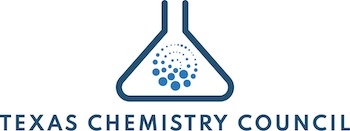Complete Story
01/30/2025
Officials pitch $40 million in restoration projects on Texas coast
Houston Chronicle | Liz Tietz | Jan. 27, 2025
Officials pitch $40 million in restoration projects on Texas coast
Their plan — which would use funds from Deepwater Horizon settlement — includes projects in Matagorda, Calhoun and Aransas counties.
State and federal agencies want to spend $40 million from Deepwater Horizon restoration funds on seven rehabilitation projects to rebuild wetland habitats on the Texas coast.
The projects call for using dredged material from waterways and canals and other sources, ultimately restoring up to 1,927 acres of marsh along the coast.
Work would take place over the next five to 10 years, according to the proposal.
Marsh land provides habitat for birds, fish, plants and other wildlife; the restoration work is intended to increase those habitats. Its funded by money from an $8 billion settlement with oil company BP, reached after its well leaked more than 134 million gallons of oil into the Gulf after the explosion of the Deepwater Horizon mobile drilling unit.
The proposal includes:
40 acres of restoration at Goose Island in Aransas County, north of Rockport
200 acres at the San Bernard National Wildlife Refuge in Matagorda County
72 acres at Schicke Point in Calhoun County.
The proposal says combinations of rising sea levels, erosion, subsidence and reduced sediment supplies have resulted in wetland habitat loss in the areas.
In the San Bernard National Wildlife Refuge, about 180 miles southeast of San Antonio, the proposal calls for filling in an abandoned oil field adjacent to the waterway to restore up to 200 acres of marsh.
“Over the past several decades, the vegetated marsh at the site has undergone physical deterioration resulting in the expansion of shallow open water,” the draft plan said.
Sediment from the Gulf Intracoastal Waterway, “private dredging sources” and other dredging disposal areas would be used to convert that open water to marsh, creating “a viable, vegetated, wetland habitat for fish and wildlife,” according to the plan. That would also create a buffer protecting adjacent natural areas from storm surge damage, the agencies said.
The national wildlife refuge “provides habitat for millions of migrating and nesting birds,” including geese, egrets and herons; bobcats, alligators, fish and shellfish also reside there, the plan said.
In Aransas County, the proposal calls for placing dredged material in or adjacent to Goose Island State Park on the Lamar Peninsula, between the St. Charles and Aransas Bays.
Schicke Point, in Calhoun County, is a peninsula between two bays east of Victoria. The project would restore marshland behind a breakwater that was built in 2017, according to the plan.
The plan also proposes four other projects east of Houston:
Up to 550 acres at Anahuac National Wildlife Refuge in Chambers County
Up to 224 acres at the Lower Neches Wildlife Management Area in Orange County
Up to 218 acres at the McFaddin National Wildlife Refuge in Jefferson County
Up to 623 acres at the Texas Point National Wildlife Refuge in Jefferson County
The sites were selected from more than 163 identified in an initial survey. An eighth project was considered in Refugio County, where up to 1,140 acres of wetlands would have been restored, but it was ultimately listed as "non-preferred," because of a prior ownership dispute that made it less likely to succeed, according to the plan.
The Texas Trustee Implementation Group, which is tasked with restoration from the spill, is seeking public comment on the proposal. The group is made up of three state agencies, the Texas Commission on Environmental Quality, the Texas Parks and Wildlife Department, Texas General Land Office, and four federal agencies: the National Oceanic and Atmospheric Administration, the U.S. Departments of the Interior and Agriculture and the Environmental Protection Agency.
Comments can be submitted until Feb. 18 online, by mail to the U.S. Fish and Wildlife Service Gulf Restoration Office or at a public meeting at the Rosenburg Library in Galveston on Jan. 28.
The agencies are also taking comments on extending the existing Sea Turtle Early Restoration Project, which has been underway since 2016.
The project aims to address threats to Kemp's ridley, green and loggerhead sea turtles on their nesting beaches and marine habitat. That work includes a nest detection and projection effort and funding for the Sea Turtle Stranding and Salvage Network, which responds to dead and injured sea turtles. It also includes funding for increased enforcement by Texas Parks and Wildlife to prevent bycatch, when turtles are caught in fishing gear and drown.
The extension would allocate just under $2.7 million to extend the project from 2026, when it is scheduled to end, through 2034.
Comments on that proposal can be submitted by email to earrp@tpwd.texas.gov or at the same public meeting.

